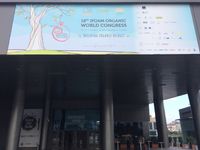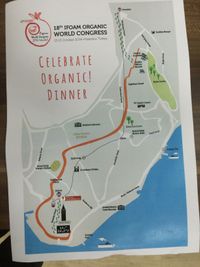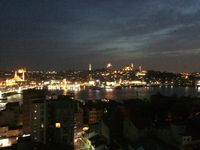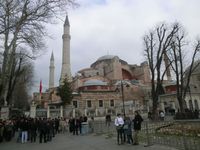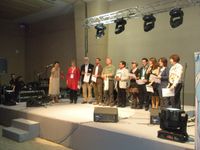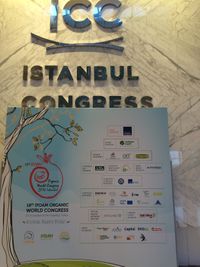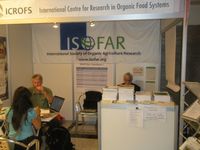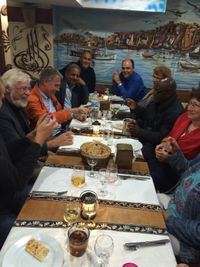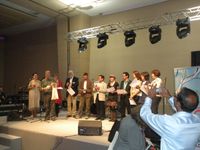4th ISOFAR science track at the Organic World Congress in October 2014 in Istanbul, Turkey
Plants and animals or in a broader sense, Mother Nature, has been serving mankind from time immemorial. If you consider agriculture, as cultivation or domestication of plants and animals then you may start evaluating the impact of mankind since the last 12 000 years. Today, still, agriculture provides food for all living organisms, and fibre and in some cases fuel for human beings. The World today nurture more than 7.2 billion as of April 2014 even if the ecological footprint has exceeded one.
According to UN databases 1, in 1980, out of 4.4 billion rural population was 1.53 times more than the urban population. Those who were the producers were more than the consumers. In 2015, the rural/urban population ratio is estimated as 0.85 revealing that more will consume and less produce. If this ratio is dissected according to the regions of development: rural/urban population ratio is 0.27 in more developed regions, 1.05 in less developed and 2.30 in least developed regions of the World. Urban growth rate peaked (2.24 %) between 2000 and 2005. Rural growth rate that was 1.13 % between 1985 and 1990 is estimated to be 0.05 % between 2015 and 2020 and then at negative rates. By 2035, 61.7 % of the population will live in urban areas where as 38.3% in rural. So, less people in more and less developed regions of the world will try to supply food for more and more consumers or urban and peri-urban areas in developed regions will become more intensified for adequate agro-food production. Additionally, there are other major issues as changing life styles and consumption habits. Higher calories and high consumption of animal products. Relationship between health especially of non-transmissible diseases and nutrition is a bottom-line for many, and new evidences strengthening these relationships appear through research as technology advances. Consumers in more developed regions of the world are becoming concerned about long-distance transfers of agricultural products, energy consuming distribution channels, loss of diversity, erosion of traditional foods or processing techniques. Agricultural land is threatened by intensification, urbanization, non-agricultural activities e.g. mass tourism, mining and climate change. How can agricultural production counteract these diverse issues and still be sustainable?
Organic agriculture rooting on health, ecology, fairness and care principles as defined by IFOAM is practiced in 164 countries according to 2012 data 2. 88 countries possess a legislative framework for organic agriculture. How many have mutual recognition? Are there any derogations and why? The market size has reached to 63.8 billion US dollars. In all 164 countries data at least on production are collected. The product flows are still towards enlarging organic markets in more developed regions of the world e.g. US or Germany. Domestic markets are enlarging. Who consumes more organic and how much they spend? Why do the consumers prefer organic food/do they also prefer organic non-food products? Are they healthier? What are the health aspects? What are the quality attributes or is it the vital quality that make it different than conventional systems? In which aspects is organic more sustainable? Does sustainability of agricultural land differ from non-agricultural organic certified areas? How does organic systems contribute to climate change?
Organic management systems aim for finding solutions to these and many other questions through research. The research objectives should derive from real-time or envisaged problems, and outcomes should find paths for quick implementation. Science is needed not only to prove its merits to the general public and lobby but also to put forward solutions to site specific problems. These can be exemplified as: Finding solutions for soil fertility management under arid conditions? How to increase yields; by developing high yielding varieties better adapted to organic conditions, by decreasing losses or by managing the value chains? What are the tools that organic farmers have in preserving animal health, which breed are resistant?
Research and innovation contributes to diversity, to competitiveness and to sustainability. In this respect, scientific meetings are major tools to establish fora to exchange results and experiences. Compared to conventional agriculture, the number of researchers and research projects and available funding is more limited in research on organic food and farming and the concept is much younger. These peculiarities enhance the importance of communication and interchanging among stakeholders. The IFOAM Organic World Congress is the unique opportunity for researchers, policy makers, extension specialists, practitioners and other stakeholders for exchanging knowledge and experiences; to share results and reversely to bring problems to the attention of world-wide research community.
The 18 th IFOAM Organic World Congress held on 13-15 October, 2014 in Istanbul-Turkey targets to ‘build organic bridges’. The Scientific track will contribute to bridging not only scientists but also institutions and disciplines, and to linking more developed and less developed, rural and urban, research to extension, plant to animal, farm practices to world-wide problems and producer and consumers. Organic is a management system that requires a diversity of inputs from different disciplines, therefore, an international Congress is the best medium to blend them.
The Scientific Track is organized with special efforts of the co-organizers, International Society for Organic farming Research (ISOFAR) and Ege University (Turkey). Organic e-prints acted as the hub for collection, revision and maintaining of all the papers. The final Book of Proceedings will further help to disseminate and archive the accumulated vast information on organic agriculture. OWC 2014 will also bridge the knowledge presented in OWC 2011 (Korea) with the one to be organized in 2017.
We wish to express our sincere thanks to all who have contributed in organization of the 18 th Organic World Congress, namely IFOAM and BUĞDAY, and Organic e-prints for hosting the manuscripts, and to those who delivered presentations or participated in the Congress, prepared manuscripts, reviewed, supported, and many others that we could not name individually…
Here you can download the 4 Volumes of the proceedings:
